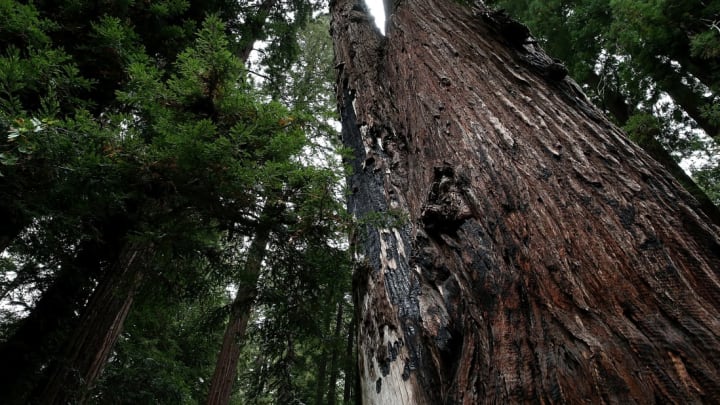David Milarch had a near-death experience in the early 1990s. It led him to rethink his life and his work as an arborist. He looked to the oldest trees he could find in the U.S.—the few remaining coastal redwoods in California—and decided to try bringing the biggest ones back to life. How? Cloning.
One stumbling block is that most of the biggest trees, the famous 30-foot-diameter ones, have already been cut down or burned. How can you get a living cutting from a dead tree? Milarch found that many such trees had secondary trunks called basal sprouts growing out of the same root system. These were genetically identical, and provided viable genetic material.
Many plants can be propagated by cloning. In its simplest form, you literally snip off a green bit and put it in water. While this process is substantially more complex for many plants, at its root (pun intended), Milarch is doing the same thing—but adding hormones to divide and multiply a single cutting. Along with his son, Milarch is taking branches from ancient giants and making new trees. He's planting a brand new forest in the coastal town of Port Orford, Oregon.
Coastal redwoods and giant sequoias grow fast. They can shoot up 10 feet in a year. Although it will take many generations for a new forest to rival the giants these clones came from, these new trees will reach mature status quickly. And while they're doing that, they suck carbon dioxide out of the air.
Milarch has spread his efforts around the world, even cloning several dozen of the largest oak trees in Ireland. His Archangel Ancient Tree Archive now operates in nine countries, working to preserve trees and reforest areas with what they call "new old growth."
In this beautiful short film directed by Michael Ramsey, we meet Milarch and see his work grow. Enjoy:
